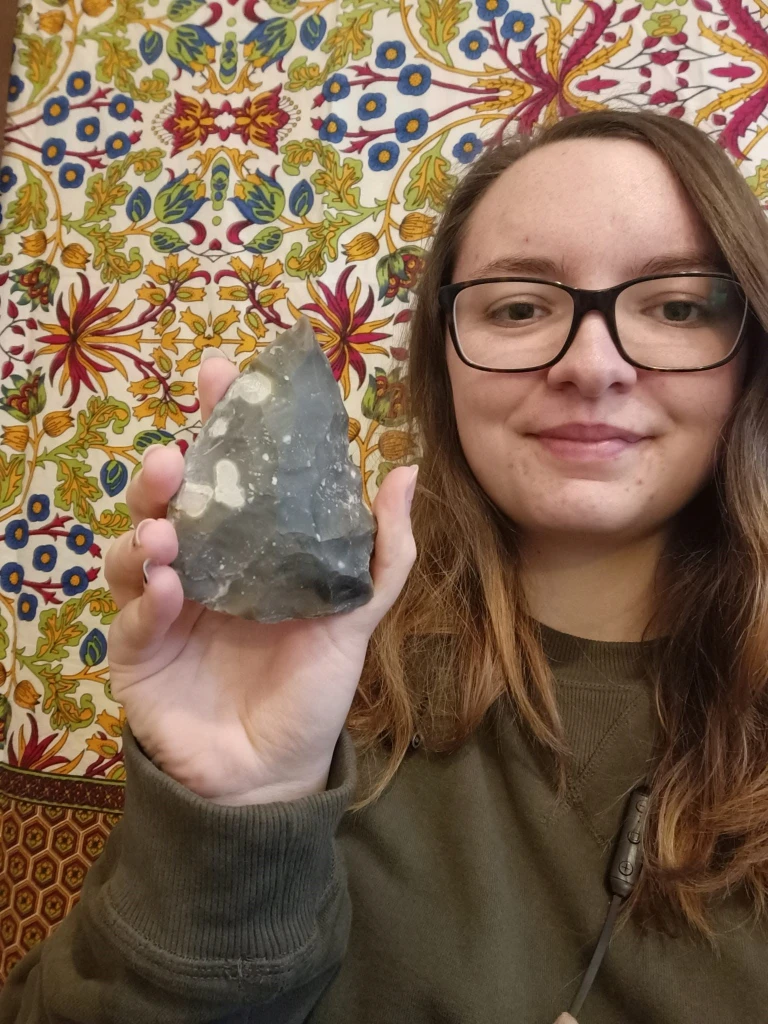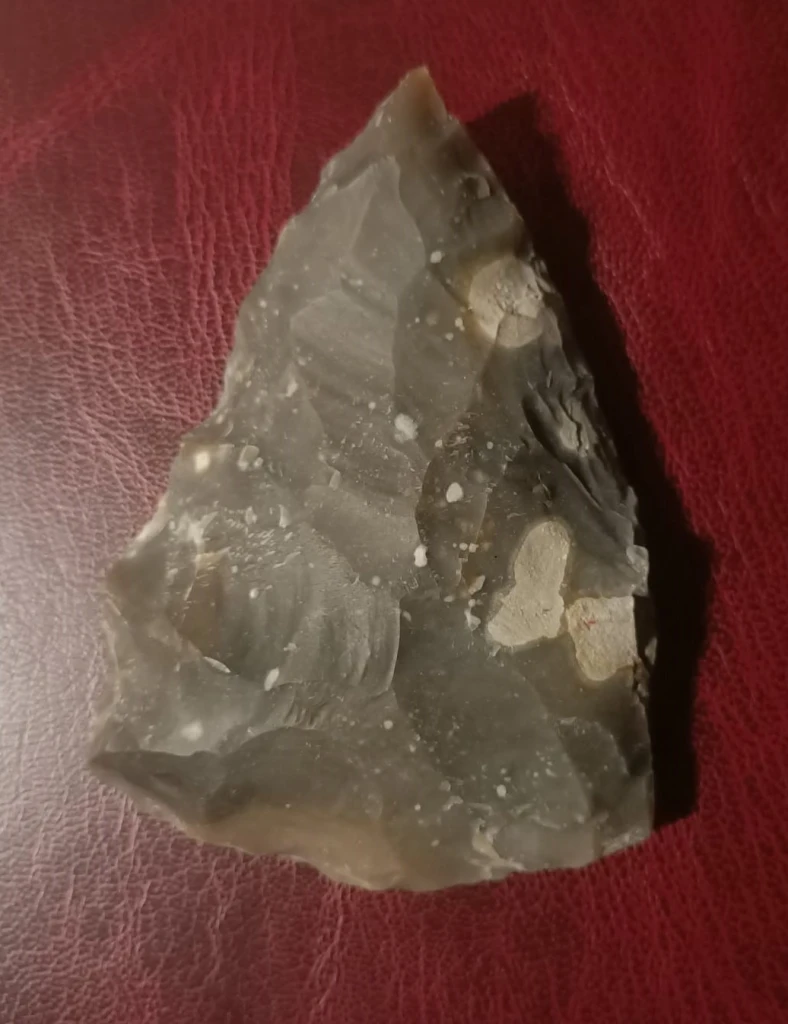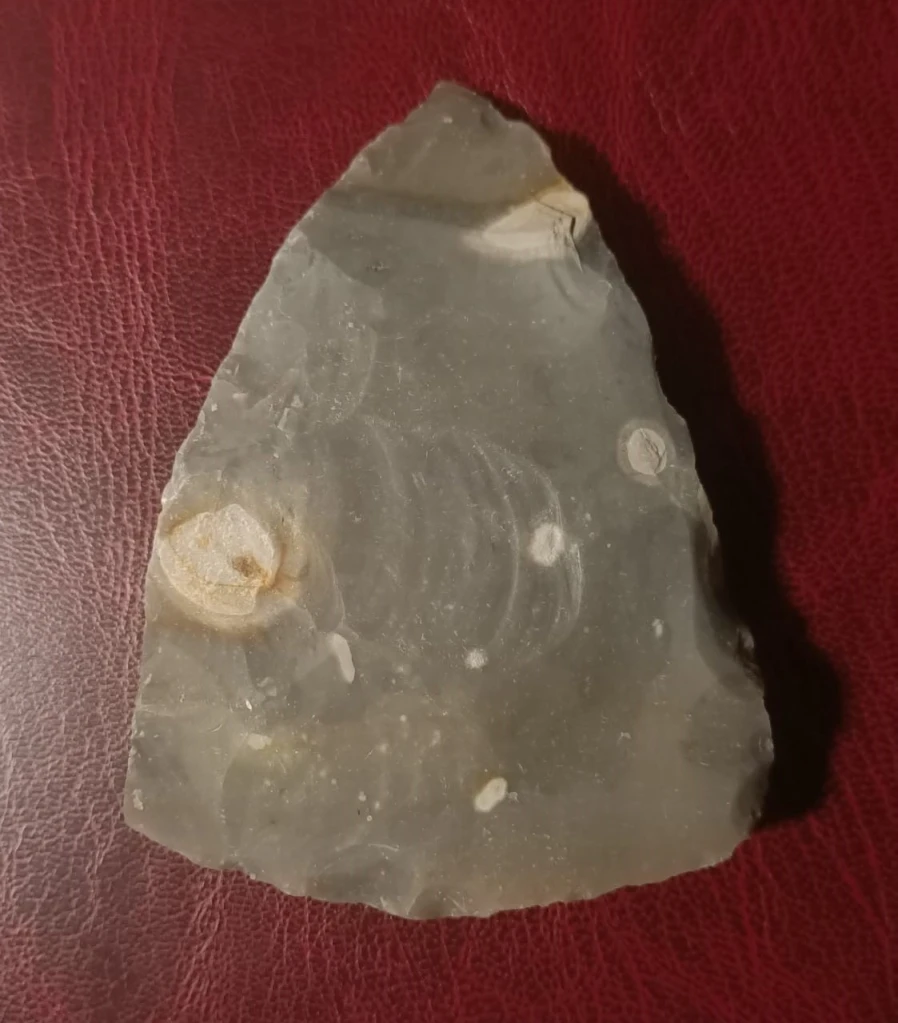
Flint working was an entirely new experience for me but getting to approach the material in a group environment made it a far less daunting task. I have knapped before, but only with glass bottles – easy to acquire as a student and much cheaper than flint! Glass behaves itself generally and you can predict where and when it will facture (mostly) making it a great starting material for knappers. I have no right to claim any decent knowledge of knapping or the skills that come with it, but I have managed, after many (many!) breakages, to form a neat little collection of glass arrowheads for myself.
I felt somewhat confident going into the flint knapping workshop John was hosting. I had seen the flint before, but I had never worked with it. We were given a detailed run through of how the flint reacts and how we should react to the flint, thinking of it as working together rather than just working on a material. Alice la Porta showd a video of a professional American knapper who created a beautiful flint axehead in just 25 strikes – a rather impressive and somewhat intimidating display of skill.
We started trying to make our own scrappers after a demonstration from John, and it’s fair to say mine did not turn out so well. I began with a decent palm-sized piece of flint which ended up about the size of my thumb with no real clear edge that could be used as a scraper. I tried again and again with flint flakes I found on the floor (I didn’t want to waste any good bits with my terrible practice blows) but didn’t have much luck. Flint was far harder to work with than I had anticipated and certainly much harder to knap than glass. I spent a good hour or so working on scraps trying to make a scraper before we moved onto looking at handaxes. Oddly, working towards a handaxe with the flint was much easier for me – I could visualise what I wanted a lot better and working with a larger piece of flint made me much more confident in my hits with the soft and hard hammers. Perhaps it was because I was used to working towards a similar goal that I set myself when making glass arrowheads, getting full surface removal of cortex and shaping the material, that I found making the flint handaxe easier to understand. This does not mean, however, that I had any clue what I was truly doing and was solely relying on the flint to help me and suggest areas to work on next. I did, in the end, leave with a beautiful handaxe I am very proud of (after some help from John).

What I took away from this experience was that knapping does not have to be a lone effort. Beginner knappers, such as myself, need help and guidance from the more experienced, and even other beginners who might be catching on to some of the tricks faster. Though it is a personal creation does not mean a community effort cannot go into its manufacturing. I personally believe the experience would not have been as enjoyable had I been left alone in a room with an instructional video to watch and learn from. People help people when it comes to these kinds of workshops, whether that’s the teacher or other learners, community is an important part of the learning and creation process.
It took a long time for me to get used to working with the characteristics of flint as I was so used to glass. I had to relearn a lot of what I knew about knapping, but it was an eye-opening experience as it just goes to show how skills can always be developed and adapted to new (and more difficult) materials. This workshop was an excellent chance for me to make something I could be proud of, but also learn through others: there was such a variety of people at the workshop, professors, other students, commercial archaeologists, and we all had different ways of approaching the task. Getting to watch others learn and practice is, for me, one of the best ways to develop new skills and enjoying doing so.

Leave a Reply